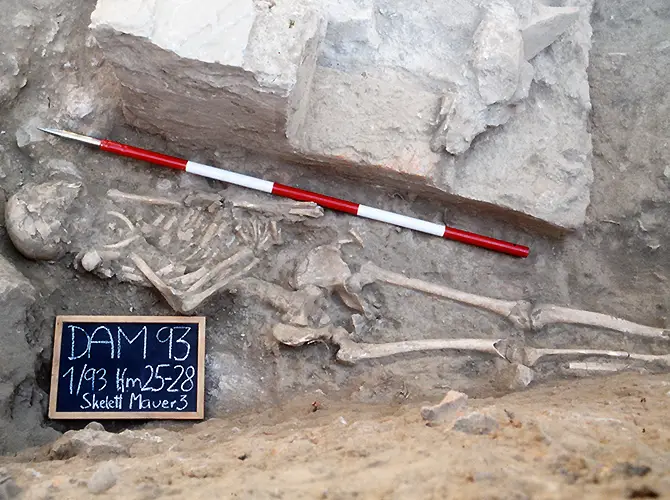It has been found that Roman gladiators consumed a mostly vegetarian diet and drank ashes after training as a tonic. These are the findings of anthropological investigations carried out on bones of warriors discovered during excavations in the ancient city of Ephesos.
Historic sources claim that gladiators had their own diet, one that comprised of beans and grains. Contemporary reports referred to gladiators as “hordearii” “barley eaters”).
In a study conducted by the Department of Forensic Medicine at the MedUni Vienna in cooperation with the Department of Anthropology at the Institute of Forensic Medicine at the University of Bern, bones were examined from a gladiator cemetery uncovered in 1993 which dates back to the 2nd or 3rd century BC in the Roman city of Ephesos (now modern-day Turkey). At the time, Ephesos was the capital of the Roman province of Asia and boasted over 200,000 inhabitants.
Using spectroscopy, stable isotope ratios (carbon, nitrogen and sulphur) were investigated in the collagen of the bones, along with the ratio of strontium to calcium in the bone material.
The results show that the gladiators ate mostly a vegetarian diet. This is almost no different in terms of nutrition from the local “normal population”. Meals were made up of primarily of grain. The word “barley eater” relates in this case to the fact that gladiators were possibly given grain of a lower quality.

Build-up drink following physical exertion
The difference between gladiators and the general population is highly significant in regards to the amount of strontium measured in their bones. This leads to the conclusion that the gladiators had a higher intake of minerals from a strontium-rich source of calcium. The ash drink quoted in literature most probably existed. “Plant ashes were evidently consumed to fortify the body after physical exertion and to promote better bone healing,” explains study leader Fabian Kanz from the Department of Forensic Medicine at the MedUni Vienna. “Things were similar then to what we do today- we take magnesium and calcium (in the form of effervescent tablets, for example) following physical exertion.” Calcium is crucial for bone building and usually occurs in milk products.
A further research project is looking at the migration of gladiators, who often came from different locations within the Roman Empire to Ephesos. The researchers are hoping that comparison of the bone data from gladiators with that of the local fauna will yield a number of differences.
Contributing Source: Medical University of Vienna
Header Image Source: WikiPedia




